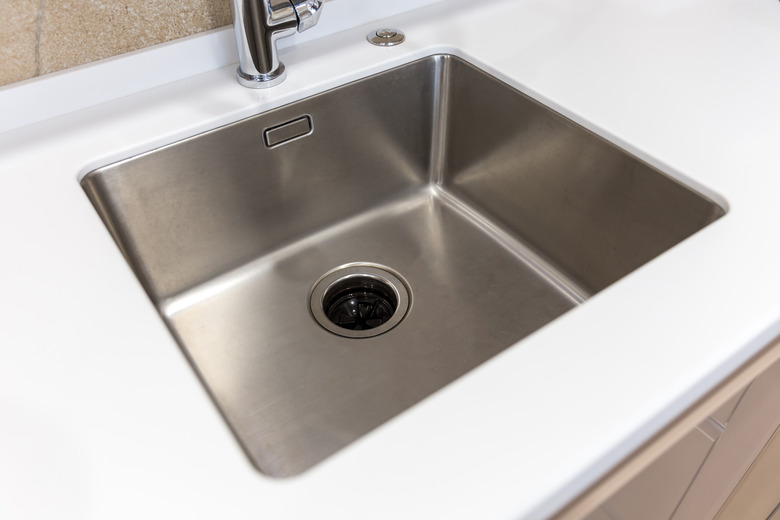How To Unclog An Insinkerator
We may receive a commission on purchases made from links.
Insinkerator is one of the most popular garbage disposal brands, and there's a good reason. The founder of the company, John Hammes, also invented garbage disposals. Throughout the years, the company has offered several disposal models. Some of the ones you currently see on store shelves are the heavy-duty Evolution Excel, the multi-purpose Contractor 333, and the compact Badger 5.
When your Badger Insinkerator is clogged, or your Evolution Excel won't spin, the company has your back with their simple but effective Insinkerator wrench, which fits into a hex slot on the bottom of the canister. This device gives you an easy way to spin the rotor to free up debris that has gotten caught between the rotor and the shredder ring without having to reach inside the disposal itself. The key is an invaluable tool for busting Insinkerator clogs, and if you don't have one, a standard 1/4-inch hex wrench will do.
How to Unclog an Insinkerator With a Plunger
How to Unclog an Insinkerator With a Plunger
If you're like most people, you probably don't have the Insinkerator repair manual that came with your garbage disposal anymore, but no big deal — you can find most of the information you need on the Insinkerator Support page online. If you have a clogged disposal, it often prevents water from draining and the support advice is to use a plunger to clear the clog.
- Let the sink fill with about 4 inches of water.
- Place a sink plunger over the drain opening, pump down and pull the plunger up with as much force as you can muster. This action pulls lodged debris out of the gap between the rotor and shredder ring.
- Once water starts draining, turn on the faucet and the garbage disposal and the disposal will do the rest.
How to Unclog an Inskinkerator With a Wrench
How to Unclog an Inskinkerator With a Wrench
When debris is hopelessly caught in the shredder ring gap, the rotor can't spin and an internal breaker shuts off the motor to prevent it from burning out. This situation calls for the Insinkerator wrench (or a hex wrench).
- Fit the wrench into the slot on the garbage disposal canister.
- Use the wrench to spin the rotor back and forth to dislodge the debris.
- When the rotor spins freely, push the red reset button, turn on the faucet and then run the garbage disposal.
Other Insinkerator Problems
Other Insinkerator Problems
Sometimes the clog isn't in the garbage disposal but the P-trap or drain line instead. When this happens, the best solution is to disassemble the P-trap and clean it, then use an auger if it's necessary to clean the waste line beyond the trap. Physically cleaning the pipes may be messy, but it's safer and more effective than putting drain cleaner into the garbage disposal, which is something you should never do.
Maintaining Your Insinkerator
Maintaining Your Insinkerator
Garbage disposals have metal parts, and metal rusts. Moreover, hard water deposits can collect on stationary internal parts, such as the canister and rim. Regular treatment with a product such as CLR garbage disposal cleaner can keep rust and scale at bay, but you can also clean your disposal with a DIY solution.
To make a cleanser with foaming action:
- Pour about 1/4 cup of baking soda into the garbage disposal and follow it with a quart of a 50/50 mixture of vinegar and cold water. The foam dislodges debris, disinfects and deodorizes.
- When the foaming stops, pour in a pot boiling water and let it sit for a few minutes.
- Run the garbage disposal under a steady stream of cold water from the tap.
